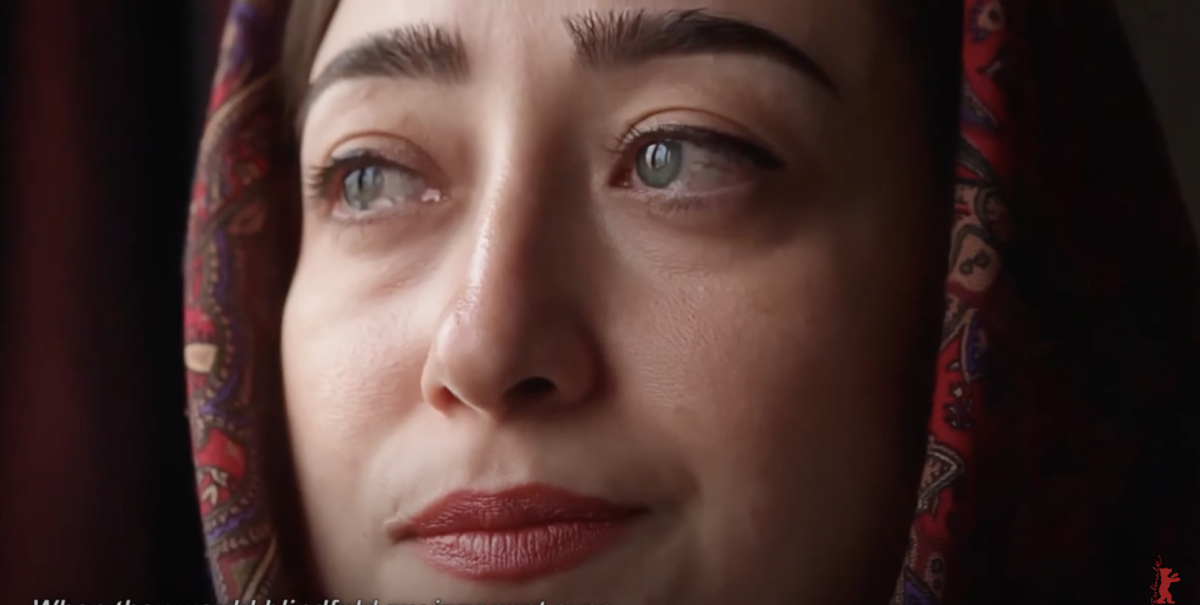‘And, Towards Happy Alleys’ Gives Us a Candid Look at Life in Iran
Debutante director Sreemoyee Singh is self-aware enough to admit that the access she got in Iran – to girls' schools, musical gatherings, lunch with locals – is because of her status as a tourist. At first, one could even level it as an accusation against the film for its pleasant, tourist-y gaze. But the more one settles into the narrative, the more one discovers her keenness and curiosity about Iranian culture. Singh observes little moments of paranoia – like filmmaker Jafar Panahi shutting the door of a store as she, the innocent visitor, sings inside, lest someone hear her (The government of Iran prohibits women from singing in public, as per its strict modesty code).
A PhD student at Jadavpur university during the 2010s, Singh travelled to Tehran for her thesis on post-revolution Iranian filmmakers living in exile. One of the joyous things about And, Towards Happy Alleys – which premiered at the 2023 Berlinale – is seeing Singh discovering her voice as a storyteller over the course of the film, as well as an entirely new culture, the musicality of a new language, its sense of humour, and the revolution brewing beneath an oppressed and actively-censored society. The film has a charming DIY aesthetic that makes it seem like a travel diary. Singh interviews her subjects in a loose and conversational manner – which leads us to some unexpected moments, such as when Panahi talks about his episode of depression, after he was forbidden from making films around 2010. He says he considered killing himself by walking into the sea. “But the waves kept rejecting me,” he says. “When I got out, I started crying. No matter what, I decided, I will continue making films.” It’s a startling admission by one of the most renowned filmmakers of our times; and like the viewer, one can also imagine Singh catching her breath behind the camera after listening to this anecdote.
In another scene, Singh meets with two of Panahi’s child actors, Aida Mohammadkhani from The White Balloon (1995) and Mina Mohammadkhani from The Mirror (1997). Sitting down with Singh, the two former actors exhibit their nifty skills – Aida tells her how she was able to cry each time Panahi asked him to, even demonstrating it for her camera in a sublime moment. Mina plays a prank on Singh in the middle of her interview, saying she wasn’t aware she was being filmed and that she doesn’t wish to participate in her film. She bursts out laughing a moment later, after which a momentarily horrified Singh joins her, calling her ‘saucy’. It’s a moment of unexpected levity while being buried in widespread dogma.

A still from 'And, Towards Happy Alleys'.
Singh finds other interesting characters too – like Mohammad Shirvani, a filmmaker declared ‘obscene’ by the powers that be, because he depicts a woman’s skin, which is prohibited by the law. There’s a wonderful exchange where each time he tries to talk about sexuality and eroticism, a construction equipment goes off in his neighbourhood, making him inaudible. He jokes about how that equipment has been set up by the government so that he only thinks and speaks pious thoughts. In a bleak moment, Shirvani talks about how progressive discourse in Iran feels like watering a dried plant. “If we water it enough, will it turn green one day?” he asks, his words hanging.
A taxi passenger stresses on the importance of an ‘internal hijab’ – at first seeming like he wants to police the women sitting behind him, like most men. But the scene takes a profound, progressive turn towards the end, making us reconsider how we view Iranian society with all its fractures, contradictions and beautiful surprises. There’s a stunning moment around the 2018 World Cup match, when the women are ‘allowed’ to celebrate their team’s victory, The vigour of the celebration on the street underlines just how muzzled the society is, adhering to strict codes.
Singh might be in the trenches of Tehran, but a parallel could be drawn between what Singh is witnessing there and Indian society at large. Women’s safety, widespread patriarchy, artistic censorship, the thought-police making most common folk self-censor their true expression in public – just like Iran’s strict censorship laws don’t allow films to release in their own country, it might be worth noting how so many of India’s most acclaimed films like Rintu Thomas and Sushmit Ghosh’s Writing with Fire (2022), Payal Kapadia’s A Night of Knowing Nothing (2021) and Vinay Shukla’s While We Watched (2023) have got either no release or a very small-scale release.
But what’s wonderful about And, Towards Happy Alleys is how gracefully it captures the first embers to what eventually became the 2022 Iran revolution, fronted by women protesting the oppressive regime. Documentary, after all, is a medium of discovery – and there’s a humility and eagerness in the way Singh films her experiences in Iran, trying to make sense of a society that might seem far away on a map, but one that is instantly familiar for someone having faced injustice on the basis of their gender, ethnicity, colour and sexual orientation. After all, what unites us more than the universal language of oppression?
*And, Towards Happy Alleys is currently streaming on MUBI
The Wire is now on WhatsApp. Follow our channel for sharp analysis and opinions on the latest developments.




